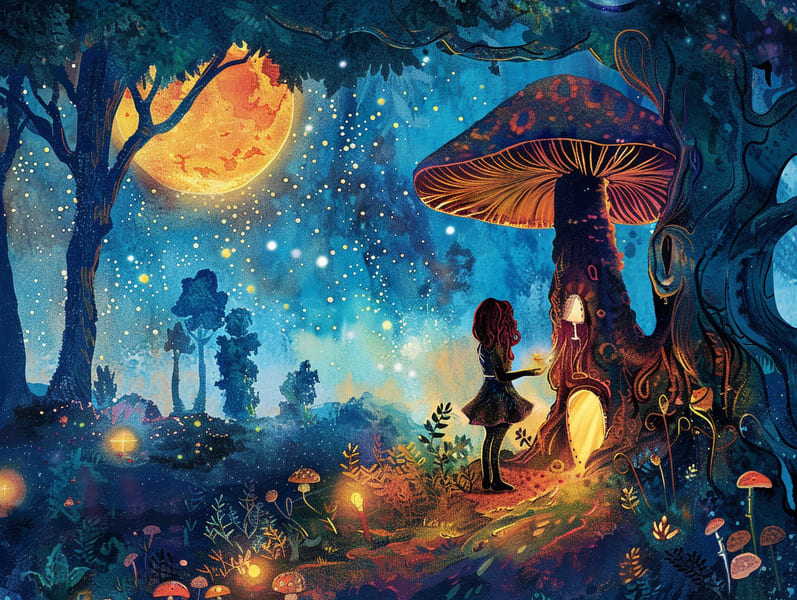The Genesis of Grimm's Fairy Tales and the Eternal Wonder.
The Genesis of Grimm's Fairy Tales and the Eternal Wonder.
Blog Article

Best fairy tales have historical significance. These tales have been passed down from one generation to the next far before they were ever published. They were born from a variety of societies, including African traditions. They were initially narrated among grown-ups, often carrying themes and messages mirroring the societal norms and beliefs of the time.
The renowned Brothers Grimm, Jacob and Wilhelm Grimm, were among the first to collect and release many of these beloved tales. Their compilation, "Grimm's Fables," included tales like "The Little Glass Slipper," "Little Brother and Little Sister," and "Snow-White and Rose-Red," which have since become staples in the world of classic fairy tales. Similarly, Hans Christian Andersen's magical narratives, such as "The Story of the Little Mermaid," and "The Duckling that Could," have enchanted hearts worldwide, securing their place in the pantheon of classic fairy tales.
Despite their ancient origins, classic fairy tales remain as pertinent as ever, especially as nighttime stories for kids. These whimsical stories are now available in multiple formats, including vividly illustrated books, magical animations, and free fairy tales online.
Their ongoing significance can be linked to several delightful features:
Key Lessons: Timeless fairy tales often provide important moral lessons. Stories like "The Story of the Boy Who Cried Wolf" teach the benefit of integrity, while "The Tortoise and the Hare" show the benefits of perseverance and meekness. These narratives offer the young clear distinctions between moral and immoral, developing their moral compass in a kind yet meaningful way.
Compassion and Insight: Traditional fairy tales frequently depict heroines facing tests and troubles, provoking children to identify with their struggles and support their triumphs. For instance, "Beauty and the Beast" teaches us the value of seeing inner beauty to recognize the true nature of a character, developing perception and knowledge.
Cultural Appreciation: Many timeless fairy tales are rooted in the cultural contexts from which they emerged. Exploring these stories can provide fascinating glimpses into different beliefs, cultivating a sense of cultural appreciation and awareness.
Fantasy and Imagination: The mythical elements in traditional fairy tales—enchanted lands—ignite children’s dreams. These tales bring readers to enchanted realms, activating fantastical thinking and a sense of curiosity that lasts a lifetime.
Classic fairy tales are not only charming but also edifying. They provide alluring tools in advancing various mental and emotional abilities in children. When timeless fairy tales are spoken, they promote speech development by bringing new language items and detailed sentence structures. This practice also improves listening skills and attentiveness, as young readers hang on every word, anxious to see what happens next.
Furthermore, analyzing the themes and characters of traditional fairy tales can advance critical thinking and intellectual skills. The young learn to spot patterns, predict happenings, and catch on to cause and effect. These explorations also promote young readers speak out their thoughts and feelings, contributing to their emotional intelligence.
In today’s electronic age, the abundance of digital fairy tales has made these stories more reachable than ever. Internet resources and software offer large libraries of classic fairy tales that can be perused or heard anytime, anywhere. Fairy tales told out loud are particularly prevalent, sharing an charming way for young readers to savor these magical stories. Read-aloud books and read-to-me stories move characters and settings to life, often augmented by delightful musical scores and harmonies that raise the storytelling journey.
The enduring charm of ancient fairy tales lies in their ability to evolve to modern society while staying true to their main lessons. Contemporary retellings of these stories often highlight more multicultural protagonists and modern settings, making them meaningful to today’s audience. However, the basic principles of boldness, goodness, and impartiality remain unchanged, continuing to move listeners of all ages.
Classic fairy tales also offer a sense of comfort and recognition. They share a orderly narrative with a clear beginning, middle, and end, often finishing with the closure of conflicts and the triumph of righteousness over wickedness. This consistency read more can be relieving for the young, affording a sense of consistency in an shifting world.
Old fairy tales continue to charm and instruct new generations, maintaining their beauty and impact in modern society. As nighttime stories for kids, they highlight a perfect blend of wonder and wisdom, developing moral values, empathy, and creativity. The existence of internet fairy tales and the sought after status of fairy tales spoken ratify that these classic narratives remain obtainable to new generations.
By preserving and narrating these narratives, we continue to treasure the rich tapestry of cultural legacy and cultural heritage. Whether you are experiencing a colorful picture book, enjoying a virtual collection, or listening on an audio story, the attraction of famous fairy tales is always within reach. These fairy tales remind us of the undying impact of tales and its ability to bring us together across centuries and lands.
Be it you are delving into a vibrantly illustrated book, viewing a internet library, or hearing an narrated book, the loveliness of classic fairy tales is always within reach.
These stories convey of the unwavering nature of fairy tales and its ability to unite us across time and space, forming a connection that fascinates and enlightens alike.